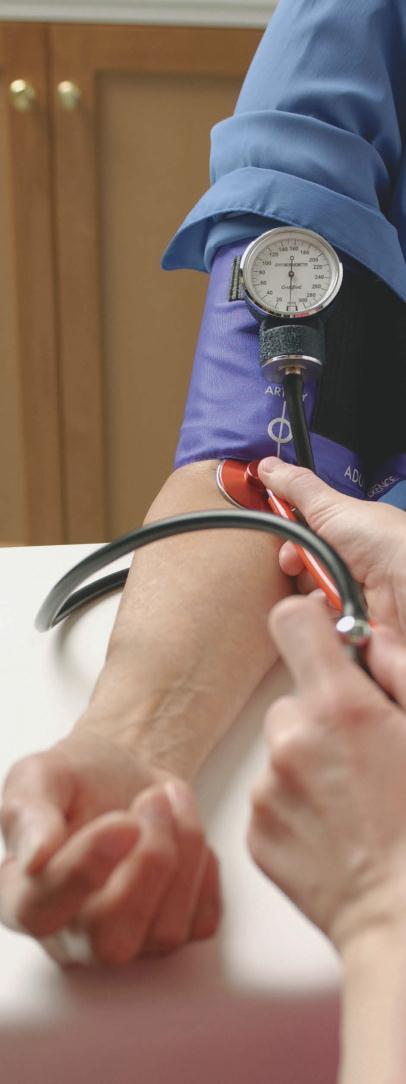Basic HTML Version


TAKING ACTION CAN HELP
To understand your risk—and how to
lower it—have a heart-to-heart with
your doctor. You can also discuss other
factors that may affect a woman’s heart,
such as using birth control pills if you’re
older than 35 and a smoker.
“It’s very important in the yearly
physical that the patient has her weight
monitored, blood pressure monitored,
blood sugars monitored, and be very
aware, as she starts to approach meno-
pause, of interventions that may be ben-
eficial,” Dr. Stoudemire-Howlett said.
“It is an appropriate intervention [in] a
once-a-year physical evaluation.”
According to Dr. Stoudemire-Howlett, a
blood pressure of 115/75 or below is con-
sidered normal in a patient who has dia-
betes. A blood pressure increase of 20/10
beyond that is considered hypertensive, and
the risk for coronary heart disease doubles
with every 20/10 increase. The healthy
cholesterol level in one without the risk fac-
tors of obesity, diabetes, hypertension and
strong family history, an LDL level less than
130, is considered acceptable.A cholesterol
level less than 100 should be achieved for
an individual who is a diabetic, and these
guidelines are even stricter for patients with
both diabetes and coronary heart disease—
to achieve an LDL level of 70 or less. The
total cholesterol should be less than 200,
and in a female the HDL cholesterol should
be greater than 50 and preferably 55.
Indications of heart disease and heart
attacks can be different for men and
women. A common symptom of heart
disease in everyone is chest discomfort (an-
gina). In women, however, angina is often
a sharp, burning pain that may be felt in
other areas, such as the back, neck or jaw.
RECOGNIZE WARNINGS
FROM THE HEART
Pain in any of these areas can also be
a heart attack—a medical emergency.
Women may have other heart attack
warnings as well, such as shortness of
breath or nausea. Don’t ignore any of
these symptoms of a possible heart at-
tack. Call 911 within five minutes of
having any of these symptoms. Even if
symptoms disappear after a few minutes,
get medical help.
“It’s known that women do not have
the ‘usual’ symptoms of a heart attack,
and a woman may experience arm pain,
shoulder pain, shortness of breath, and
symptoms that they describe more as
indigestion,” Dr. Stoudemire-Howlett
said. “A diabetic patient, male or female,
may experience only shortness of breath
symptoms and not manifest chest pain
symptoms. However, it is very important
here to stress whenever [an] individual
experiences a change in the norm of [his
or her] body function, it should be dis-
cussed with his or her primary physician.”
“It’s extremely important to trust your
physician and follow their instructions
as well as [maintain] a positive attitude,”
Hunter said. “Don’t focus on what you
can’t do, but what you can do within reason.
Moderation is everything, especially when it
comes to living with heart disease.”
TO LEARN MORE ABOUT HEART DISEASE, VISIT THE AMERICAN
HEART ASSOCIATION WEBSITE. GO TO
8 •
PARTNERS
—Continued from page 7

